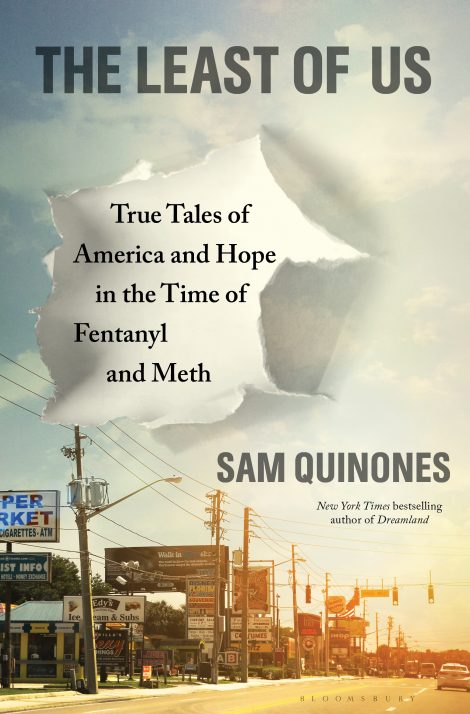
THE LEAST OF US
True Tales of America and Hope in the Time of Fentanyl and Meth
From the New York Times bestselling author of Dreamland, a searing follow-up that explores the terrifying next stages of the opioid epidemic and the quiet yet ardent stories of community repair.
Sam Quinones traveled from Mexico to main streets across the U.S. to create Dreamland, a groundbreaking portrait of the opioid epidemic that awakened the nation. As the nation struggled to put back the pieces, Quinones was among the first to see the dangers that lay ahead: synthetic drugs and a new generation of kingpins whose product could be made in Magic Bullet blenders.
From the New York Times bestselling author of Dreamland, a searing follow-up that explores the terrifying next stages of the opioid epidemic and the quiet yet ardent stories of community repair.
Sam Quinones traveled from Mexico to main streets across the U.S. to create Dreamland, a groundbreaking portrait of the opioid epidemic that awakened the nation. As the nation struggled to put back the pieces, Quinones was among the first to see the dangers that lay ahead: synthetic drugs and a new generation of kingpins whose product could be made in Magic Bullet blenders. In fentanyl, traffickers landed a painkiller a hundred times more powerful than morphine. They laced it into cocaine, meth, and counterfeit pills to cause tens of thousands of deaths-at the same time as Mexican traffickers made methamphetamine cheaper and more potent than ever, creating, Sam argues, swaths of mental illness and a surge in homelessness across the United States.
Quinones hit the road to investigate these new threats, discovering how addiction is exacerbated by consumer-product corporations. “In a time when drug traffickers act like corporations and corporations like traffickers,” he writes, “our best defense, perhaps our only defense, lies in bolstering community.” Amid a landscape of despair, Quinones found hope in those embracing the forgotten and ignored, illuminating the striking truth that we are only as strong as our most vulnerable.
Weaving analysis of the drug trade into stories of humble communities, The Least of Us delivers an unexpected and awe-inspiring response to the call that shocked the nation in Sam Quinones’s award-winning Dreamland.
- Bloomsbury
- Hardcover
- November 2021
- 432 Pages
- 9781635574357
About Sam Quinones
Sam Quinones is a journalist, author and storyteller whose two acclaimed books of narrative nonfiction about Mexico and Mexican immigration made him, according to the SF Chronicle Book Review, “the most original writer on Mexico and the border.” His book, Dreamland, won the 2015 National Book Critics Circle Award for General Nonfiction.
Praise
“Sam Quinones is the indispensable ground-level guide to the epidemics of addiction that plague so many Americans. . . . Everyone should read this.” —Angus Deaton, co-author of Deaths of Despair
“With deep compassion and piercing insight, Sam Quinones beautifully captures the pain of America’s opioid addiction.” —Ioan Grillo, author of Blood Gun Money
“With The Least of Us, Sam Quinones continues to be the preeminent chronicler of the national opioid epidemic. . . . Sam has once again captured not only the pain and sadness but the resiliency and optimism that have come to be the hallmark of this epidemic.” —Michael Botticelli, Former Director, White House Office of National Drug Control Policy
Discussion Questions
- Think about the title, The Least of Us. Who do you think is Quinones referring to in the title?
- Why is the opioid crisis called a silent epidemic? What contributes to the silence around it?
- What is the significance of Quinones talking about Janssen’s listing all the theoretical compounds that could come from fentanyl?
- Recount one or two personal stories of drug addiction in the book. What was Quinones’ reason for including so many personal angles in the book?
- Recount one or two stories of towns coming together to find a solution to the opioid crisis. What did they do differently? Who did they rely on? What do these stories say about our ability to solve America’s opiate epidemic?
- A lot of the stories we read about are set in small town America, where industry has declined. Talk about how this decline and economic depression can affect how people react to large amounts of opiates flooding the market.
- What are some solutions to the opioid epidemic in America, based on what Quinones has presented in the book? Do you agree with these solutions?
- What can this book teach us about caring for drug addicts and homeless people we might see on the streets?
